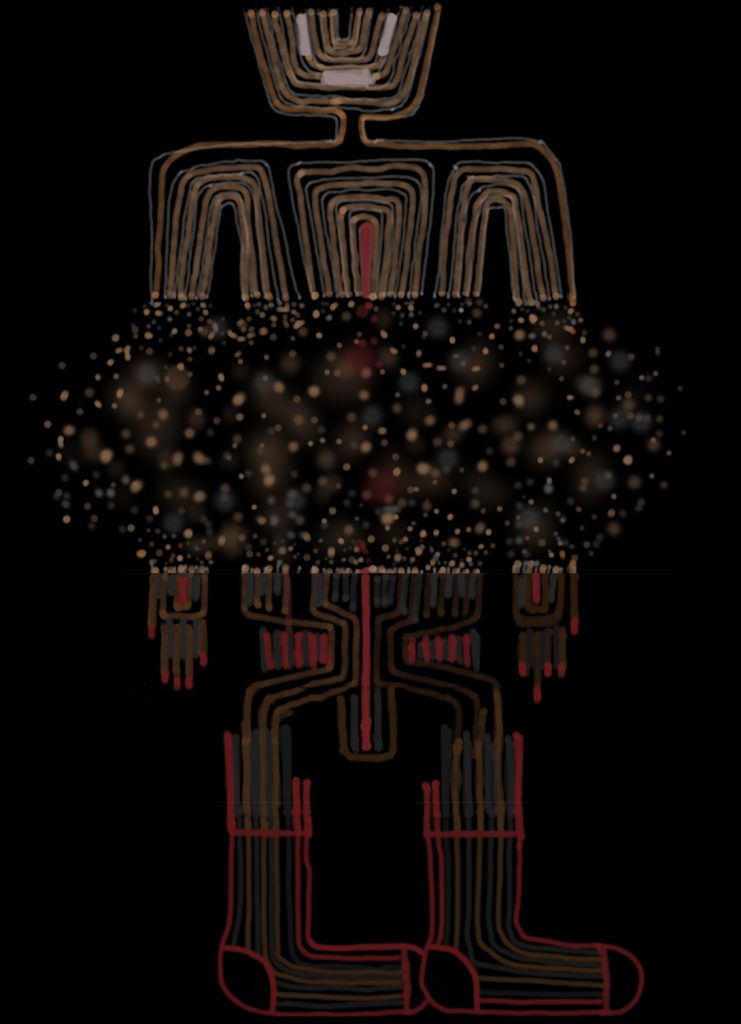Five years ago, California-born artist and designer Brian Thoreen found himself at a crossroads, splitting his time between Los Angeles and New York, not wanting to be in either town. When a hurricane rerouted his Yucatan vacation to Mexico City, he immediately fell in love. Upon meeting the locally born, multidisciplinary designer Héctor Esrawe there on his next trip, he found his creative match, and made it his adopted home.
Since they first met, Esrawe and Thoreen have co-founded two companies together in Mexico City—Vissio, a platform for experimental glass-making, and Masa, a nomadic gallery with a focus on contemporary Mexican art and design.
They have meanwhile maintained their individual practices: Esrawe’s architectural and interiors studio recently designed Miami’s colorful showroom for Arca, the Mexican stone company, with Superflex, while Thoreen has been creating functional and nonfunctional furnishings and artworks from the likes of metal and stone. They have also managed to maintain a close friendship; in fact, they’re currently building a weekend house to share outside of the city, in Ocotitlán.
While the concept of creative collaboration has become ultra-trendy as of late, Esrawe and Thoreen remain a paragon of artistic partnership and exchange that can sustain individual as well as cultural growth. A sense of camaraderie and mutual respect was palpable during their recent conversation with Artnet News, in which they discussed their life-changing friendship, joint career ventures, and Mexico’s collaborative spirit.
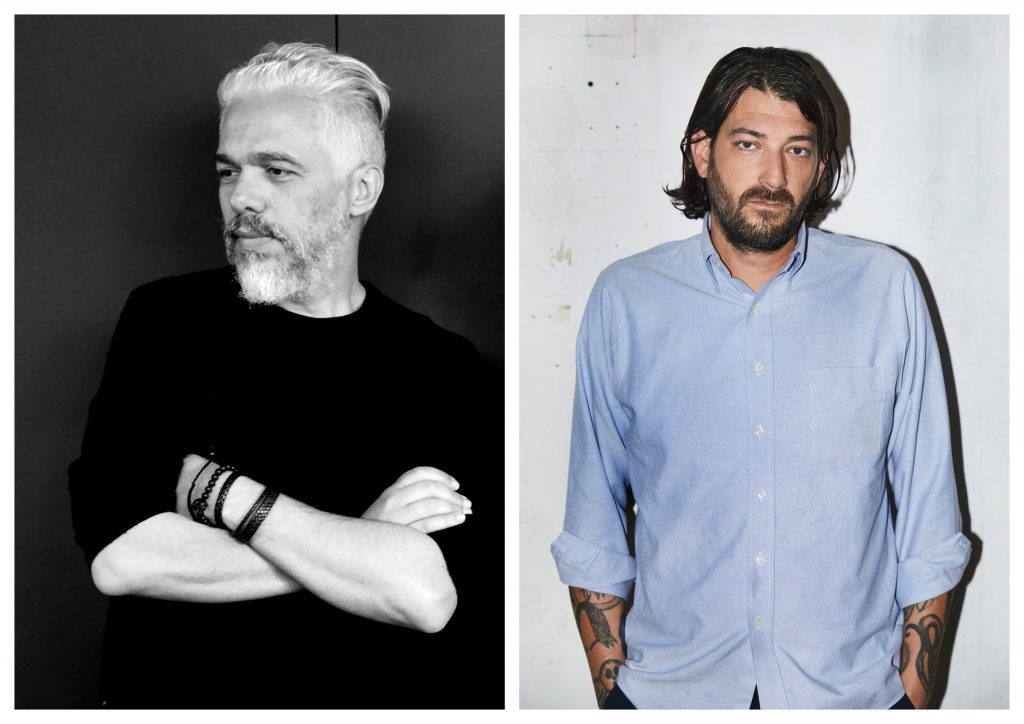
Designers Héctor Esrawe (photo: Ana Hop) and Brian Thoreen (photo: Jiro Schneider).
How did you two meet?
Brian Thoreen (B.T.): Hector was one of the first people I met in Mexico City, and we just hit it off instantly. I was on a trip with a couple of friends and Age [Salajõe]—who’s our other partner at Masa—had just moved [to the city]. I knew her from L.A. She introduced me to Hector, and you know, it just kind of snowballed from there.
I already had my own design company; I was living between L.A. and New York, and didn’t want to be in either [city]. So I was coming to Mexico more and more often. They included me in everything—every dinner, even a wedding! I was kind of a third wheel for a while, but they were just really generous with their time and friendship. Out of that was born Vissio, [the] glass company that Hector and [I run together], in 2018. And then [came] Masa, our nomadic gallery with Age.
Héctor Esrawe (H.E.): I think you can establish immediately when you have a connection with a person. Brian and I became really [fast] friends. We have a dialogue that is rich, and that has proved to be something we want to [continue].
And even though Brian has his own style, and I have my own style, we realized that we can [work] together.
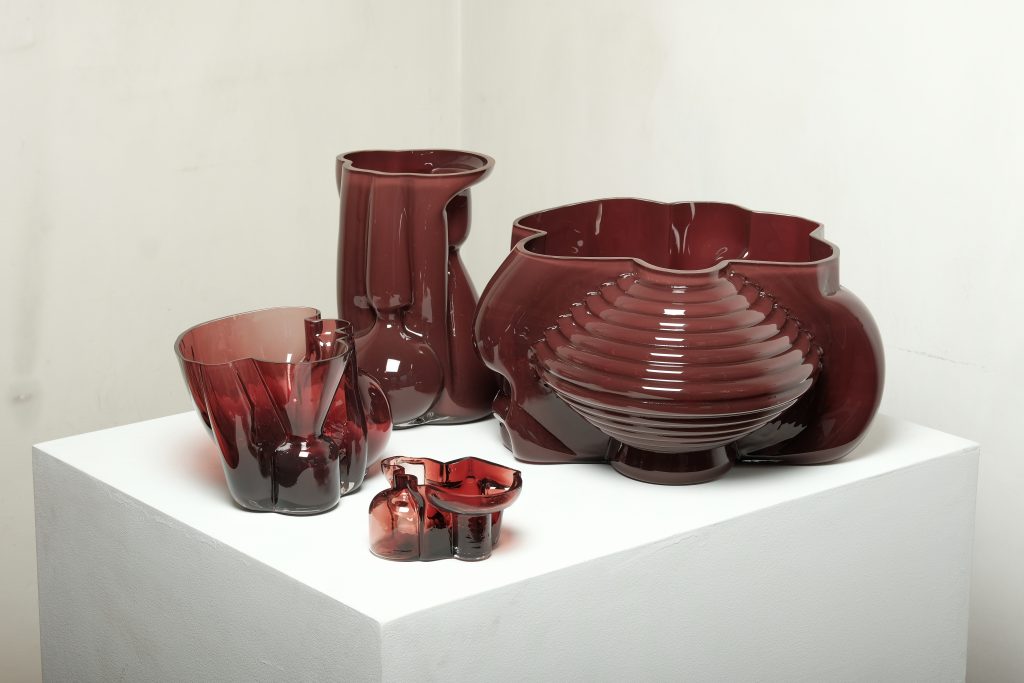
“Exquisite Corpse” glassworks from Vissio. Photo: Fernando Etulain.
Tell us about the story behind your creative partnership.
B.T.: Hector invited me to [collaborate with him and the Mexico City–based glass manufacturer] Nouvel to present something in [the local art fair] Zona Maco that was a bit more sculptural, more experimental. And [we] really worked well together. This experiment for this one exhibition became such a wonderful collaboration, we actually formed a company around it: Vissio.
We connected creatively, but even more than that, [we share a] work ethic. We both work from a place of integrity and approach things with a seriousness, really pushing to get things right. Our aesthetics can be quite different, but the way we work together and participate in the world, with a real desire for discovery and beauty—that’s the connection, I think. The creative side—that’s the easy part.
H.E.: I would say it’s a process of learning that links us, because we don’t see our goal as the result; our goal is the process. When we collaborate, we really go deep into the intentions of the project, and leave out the ego—and as soon as you leave out the ego, you only learn.
And if you want to talk about the ethics, it is to do things in the right way, with full honesty, and to understand how you can translate—for example, in Mexico—the skills of artisans into new meanings and expressions, in collaboration with the artisans, to create something that is out of the ordinary.
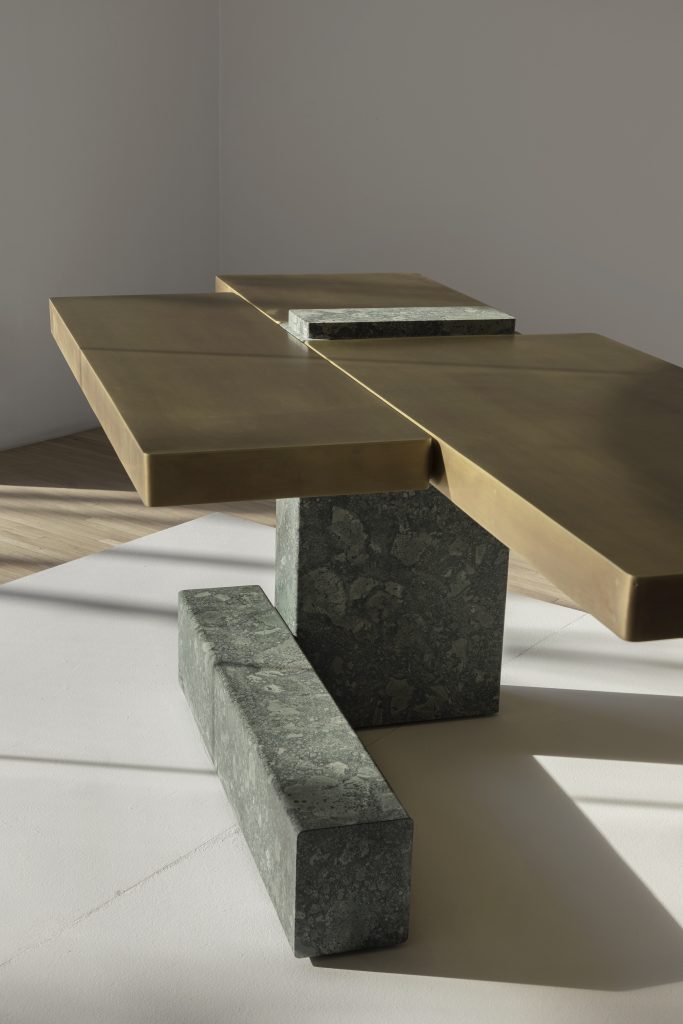
Esrawe’s brass-and-marble Fragmento desk. Photo: Alejandro Ramirez.
What draws each of you to Mexico City? How does it fuel your creative practices?
H.E.: There’s a moment in Mexico right now, especially in Mexico City—I call it a “Renaissance moment”—where workshops, small studios, and [artisanal] techniques are not only coming back to life, but they’re being embraced and promoted.
We as Mexicans [have started] to look back again on our traditions as the axis of our work. This [is] a special moment to do things in Mexico—through the culinary scene, architecture, art, and design. And I think it’s not only something that we see [here]—it’s started to become something that people see from abroad.
B.T.: I mean, it’s like nowhere else in the world in terms of what’s possible. There’s a freedom and a beauty in the messiness.
In my opinion, Mexico City—and Mexico as a whole—it’s much more inclusive than exclusive. It’s pretty wide open. People want to collaborate; people want to work together and share projects and share resources. Of course, there are exceptions, but it’s not as competitive as other cities. It’s just a different vibe here. People recognize talent in you, and they want to work with you.
And the history of craft obviously brings a lot into what we’re able to do. I’ve been doing these works in copper, working with this little shop in Michoacán in Santa Clara del Cobre, which is where all the traditional hammered Mexican copper is done. It’s incredible.
What were you going for with your “Exquisite Forms” piece?
B.T.: Hector went first, and so all I got was this line of dots, and it was really pretty vague. I just had no idea where to go with it.
I decided to mess with him, and took that same line of dots and mirrored it on the bottom, and then made this kind of explosion between the two.
And then he did the next one, and I did the next one. And it turned out… I’m very happy with it, actually.
H.E.: What I sent to Brian was not legible. That was the intention—I wanted to give [him] a hard time.
But actually [Brian], what you called dots, they are lines.
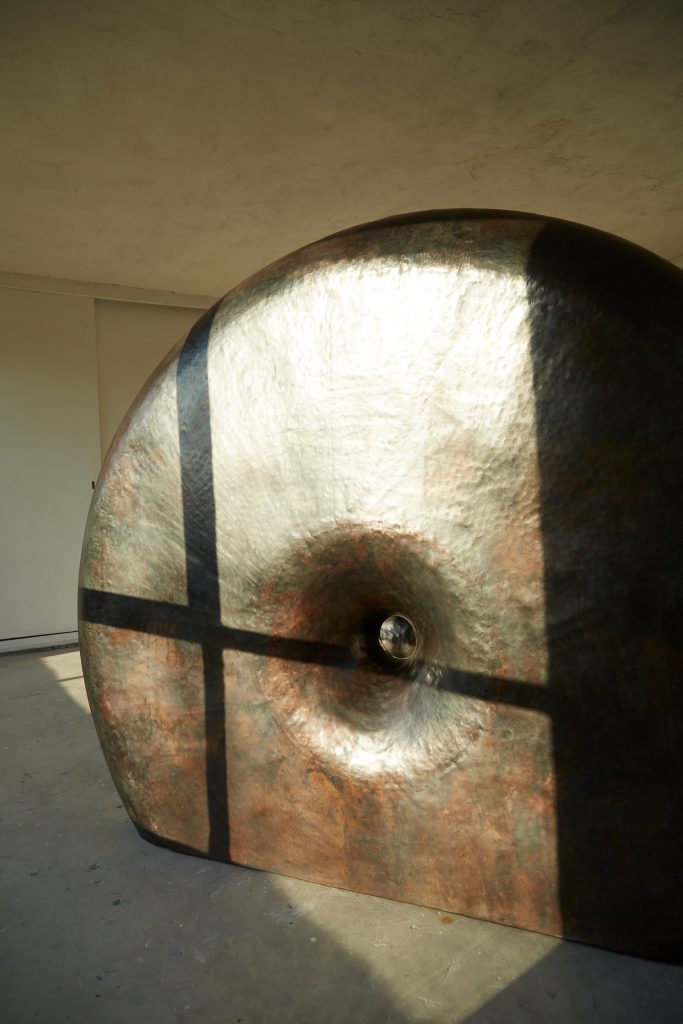
One of Thoreen’s copper donuts, on display at the duo’s Masa gallery. Photo: Tom de Peyret.
CE: What do each of you admire most about the other’s work?
H.E.: There is a definition of minimalism—I don’t know if it was [from] Donald Judd—[as being] like many, many small dots that make up a big wave. I think that about Brian’s work. The way he simplifies everything to a single expression is super-strong.
Recently, he made these huge donuts of copper, hammered by hand. The simplicity of them—how cohesive [they are]—is striking. But you can understand that they have a process and method about them.
B.T.: I mean, the collaborative spirit from Hector—I had never experienced that before. And with that, the level of integrity he puts into his work—it’s always thoughtful and thought-out. It’s him being a good human, and that comes through in his work.
Here’s somebody who has that kind of work ethic and thoughtfulness and appreciation for the craft and the makers and the communities. Because of that, for me, it’s not about hustling anymore; it’s not about finding the edge. Hector’s not like that, and Mexico’s not like that. That’s what is refreshing, because once all that’s out of the way, you can actually get to work, focus on doing good stuff, and do it with integrity.
